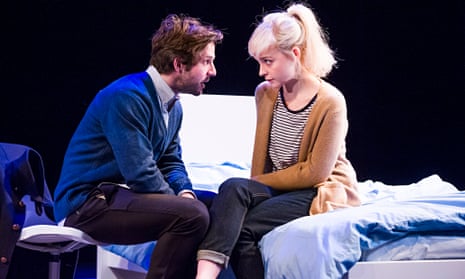You could measure out a theatre-going life in Tom Stoppard innovations. His best plays are evolutionary staging posts. In 1966 Rosencrantz and Guildenstern Are Dead brought characters from the wings to the centre of the stage, and heralded a new idea of history. The Real Thing, infused with a new emotion, altered the idea of this dramatist as being a primarily cerebral writer.
Crucially, in 1993, Arcadia – blending history, science and landscape gardening – made the structure of the play a persuasive aspect of its argument. In doing so it presaged one of the most interesting theatrical developments of the past 20 years. Science and philosophy have taken to the stage, making a dilemma into a drama. This was so in Michael Frayn’s Copenhagen and more recently in Nick Payne’s Constellations.
Stoppard’s new play should have been the apogee of this development. The “hard problem” of the title is the problem of consciousness. Where is it? What is it? Crucially, is “the mind” the same as “the brain”? The joy of the play, his first for nine years, is that it brings this problem to the stage and poses it crisply. The difficulty is that Stoppard then glides away from examining it. Often taxed with being too intellectual as a playwright, he is here not intellectually stringent enough. The great adventurer looks strangely conventional.
Yet the theatre is in many ways an ideal arena in which to incarnate the problem of consciousness. How do you tell the brain from the mind? It is a question that echoes Yeats: how can you tell the dancer from the dance? Or, to some extent, the player from the play?
Stoppard puts the problem with exemplary clarity. I know this for I purposely went in raw to the auditorium, not allowing myself to peek at the playscript: each step of the argument was intelligible. Yet his play is not really about consciousness. It is less about how we think than what we think: less about process, more about the extent to which moral behaviour is instinctive. Most of the action takes place in conventional theatrical territory.
The action is centred on an institute for brain science. Bob Crowley’s design wires us into the place immediately: it is both hygienic and electronically buzzing. A giant brain hovers over the action. Transparent chains dangle from the ceiling, flashing different coloured lights; an electric circuit zings between them. There are bursts of Bach, a way of signalling that this is an evening of brain with a beat.
A young woman is applying for a job. Her qualifications are not top-notch. Her beauty is unchallengeable. Her attitude to the problem that her potential boss wants to consider, the hard problem of the title, is distinctive. She believes in God. She is one side of the argument of the play; an upholder of the idea of absolute morality, a believer – there are personal reasons for this – in maternal love as something other than a selfish gene. At the other pole is her tutor-lover: his face is a study as he sees her kneeling at the side of the bed in prayer. He – a convinced materialist – is both clever and unlikable.
Plotting and characterisation are tendentious. Despite a fizz of contradiction, the events back the less materialist side of the debate. A giant coincidence falls like the secular equivalent of a miracle.
Olivia Vinall, who has risen swiftly at the National through the muted Shakespearean roles of Desdemona and Ophelia, is more persuasive as a beguiler than as a research scientist. Her rapt face acts better than her repetitive gestures. Her role suffers from what might be called the David Hare Dilemma, in which a sympathetic playwright makes women the repository of value and emotion and in doing so ends up by undermining his own feminism.
The chaps are more brutal. Damien Molony is acutely convincing as her lover, a finely honed egotist. Anthony Calf is particularly good as the head of the institute, who is a kind, authoritative patriarch at home and an overbearing boss in the office. He manages, in the way that a fine actor can, to change shape in front of the audience: seeming to pump up his body with power and self-satisfaction.
This is Nicholas Hytner’s last production as artistic director of the National. He leaves the theatre at the end of March, after 12 heady years. His staging of Stoppard is characteristically sleek, humorous, acute and urbane. It is not his best production. But matching the best after such a buoyant reign would be a truly hard problem.
The Hard Problem is at the Dorfman theatre, London until 27 May

Comments (…)
Sign in or create your Guardian account to join the discussion